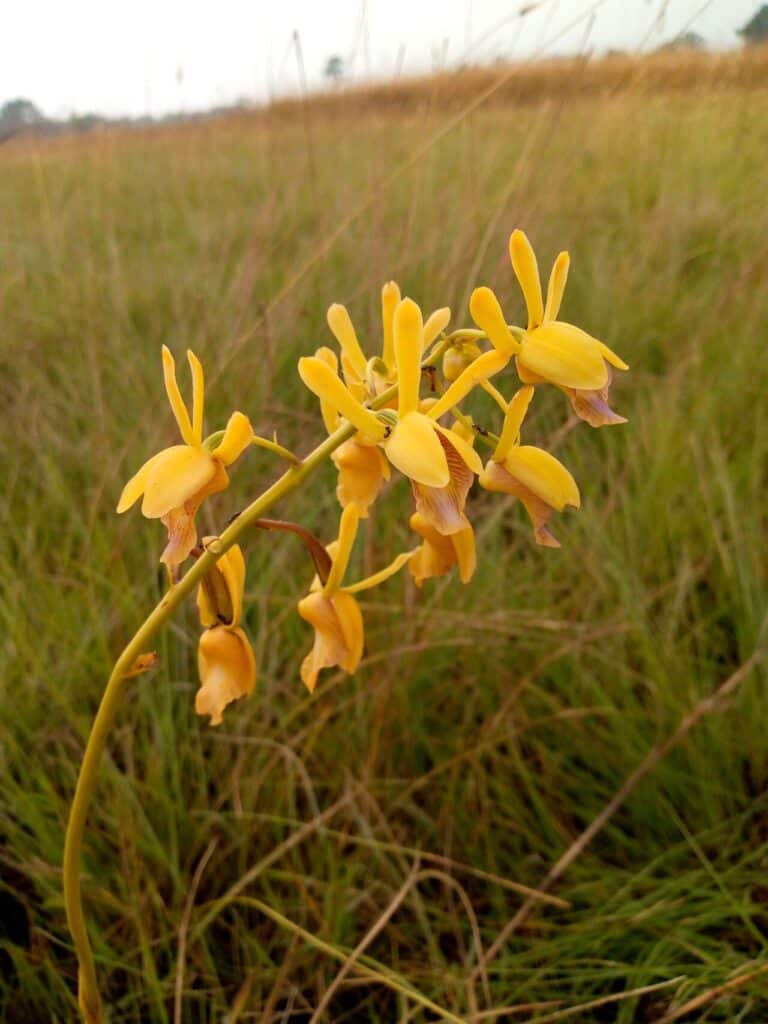Unlocking the Secrets of Eulophia angolensis: A Guide to Propagation
The world of orchids is vast and captivating, filled with an incredible variety of shapes, sizes, and colors. Among these fascinating plants, the Eulophia angolensis stands out with its terrestrial nature and unique propagation methods. Unlike its epiphytic cousins that cling to trees, this orchid thrives in the earth, adding a touch of exotic beauty to gardens and homes.
But how do you cultivate more of these beauties? Let’s unravel the secrets of Eulophia angolensis propagation and explore the different paths you can take to expand your orchid family.
Understanding the Eulophia angolensis
Native to regions of southern Africa, Eulophia angolensis, also known as the African Ground Orchid, is a terrestrial orchid known for its vigorous growth and elegant, often fragrant, blooms. Its ability to thrive in a variety of soil types and its relatively low-maintenance needs make it a rewarding plant for both beginners and experienced orchid enthusiasts.
Propagation Methods: A Two-Pronged Approach
Eulophia angolensis can be propagated in two primary ways:
1. Division:
- Timing is Key: The best time to divide your Eulophia angolensis is during its dormancy period, typically after the flowering season concludes. This allows the plant to focus its energy on establishing new root systems.
- Divide and Conquer: Gently unearth a mature plant ensuring minimal damage to the root system. Using a clean, sharp knife or shears, carefully divide the rhizome, ensuring each section has at least 3-4 healthy pseudobulbs attached.
- Potting Up: Plant the divided sections in well-draining orchid potting mix, ensuring the pseudobulbs are partially buried. Water sparingly until new growth emerges.
2. Seed Propagation (Advanced):
- A Labor of Love: Propagating orchids from seed is notoriously challenging, requiring sterile conditions and specific growing media. However, for the dedicated enthusiast, it offers a rewarding journey.
- Symbiotic Relationship: Orchid seeds lack endosperm, the food source found in most other plant seeds. They require a symbiotic relationship with specific mycorrhizal fungi to germinate.
- The Flask Method: Orchid seeds are typically sown in sterile flasks containing specialized nutrient agar. This provides the ideal environment for germination and early growth.
- Patience is Paramount: It can take several months to years for seedlings to mature enough for transplanting.
Tips for Success:
- Well-Draining Soil: Ensure your potting mix allows for excellent drainage. A combination of orchid bark, perlite, and coco coir works well for Eulophia angolensis.
- Light Requirements: These orchids thrive in bright, indirect light. Avoid direct sunlight, which can scorch their leaves.
- Watering Wisdom: Water thoroughly when the potting mix is nearly dry. Avoid overwatering, which can lead to root rot.
- Temperature and Humidity: Maintain moderate temperatures and humidity levels similar to their natural habitat.
Propagating Eulophia angolensis can be a fulfilling endeavor. Whether you choose the tried-and-true method of division or embark on the journey of seed propagation, the reward of nurturing new life from a parent plant is truly special. With patience, care, and a touch of green thumb magic, you can expand your orchid collection and enjoy the exquisite beauty of the Eulophia angolensis for years to come.
